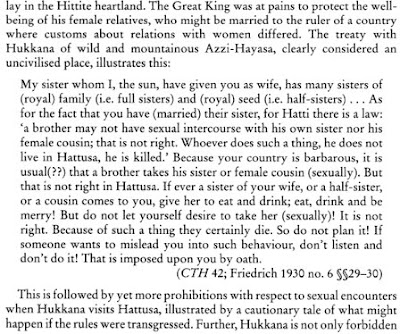Now this is actually a large span of years from the death of Shimon haTzaddik until the churban bayis sheni.כל ימים שהיה שמעון הצדיק קיים לא היה מגיע למחצית ההר עד שנעשה איברין איברין משמת שמעון הצדיק היה בורח למדבר והסרקין אוכלין אותו"All the days Shimon the righteous was alive, it did not reach half down the mountain before it was turned to pieces {due to hitting the jagged rocks}. Once Shimon the righteous died, it would flee to the wilderness, and the desert-dwellers would eat it.
My theory -- and it is no more than that -- is that this was no mishap, but was the result of deliberate action by Tzedukim. Locally, when put together in context of the other things which occurred of did not occur, the intent would seem to be that this was due to the lack of merit; but we can still theorize. I would note motive, opportunity, and prevalence of Tzedukim.
The goat running away every year is almost comical, though it was likely taken as an unfortunate omen every year by the people living through it. However, the pesukim in Acharei Mos never explicitly say to push the goat off the cliff, but rather to send it out into the wilderness, which is exactly what is happening here. Rashbam interprets the pesukim, on the peshat level, in this way, comparing it to the birds of the leper, one of which is slaughtered and one of which is sent out alive into the field. So it seems quite plausible that the facts on the ground corresponded with some otherwise un-noted Sadducee Biblical interpretation. This would be motive.
There was also opportunity. The designated man, the ish itti, went out alone to those cliffs. There was no one to witness him, and it is easy to claim it ran away, with no one able to accuse him of deliberately diverting from the ceremony.
Tzedukim were also prevalent in the kehunah in second-Temple times. There are famous incidents, such as King Yannai being pelted with Esrogim after misperforming the nisuach hamayim because of Sadducee beliefs. And the Tzeduki who boasted to his father about performing the ketores part of the ceremony in accordance with Tzeduki interpretation, where the father predicted correctly that his son would not live out the year. The Mishna tells us how they modified the ritual on Yom Kippur with an extreme leniency to counteract the position of the Tzedukim (about Tevul Yom, IIRC), and compensated by adding a bunch of stringencies. And the Mishna tells us how every year they would impose an oath on the Kohen Gadol not to divert, and they would turn away and cry, and he would turn away and cry, the reason being the suspicion that he may be a Tzeduki.
The gemara speaks about how almost no kohen gadol lived out the year. Bavli Yoma 9a reads:
אמר רבה בר בר חנה אמר ר' יוחנן מאי דכתיב (משלי י) יראת ה' תוסיף ימים ושנות רשעים תקצרנה יראת ה' תוסיף ימים זה מקדש ראשון שעמד ארבע מאות ועשר שנים ולא שמשו בו אלא י"ח כהנים גדולים ושנות רשעים תקצרנה זה מקדש שני שעמד ד' מאות ועשרים שנה ושמשו בו יותר משלש מאות כהנים צא מהם מ' שנה ששמש שמעון הצדיק ושמונים ששמש יוחנן כהן גדול עשר ששמש ישמעאל בן פאבי ואמרי לה י"א ששמש ר' אלעזר בן חרסום מכאן ואילך צא וחשוב כל אחד ואחד לא הוציא שנתו
This is all non-solid, and the theory approaches being a conspiracy theory. Yet it seems to me to be somewhat plausible.







